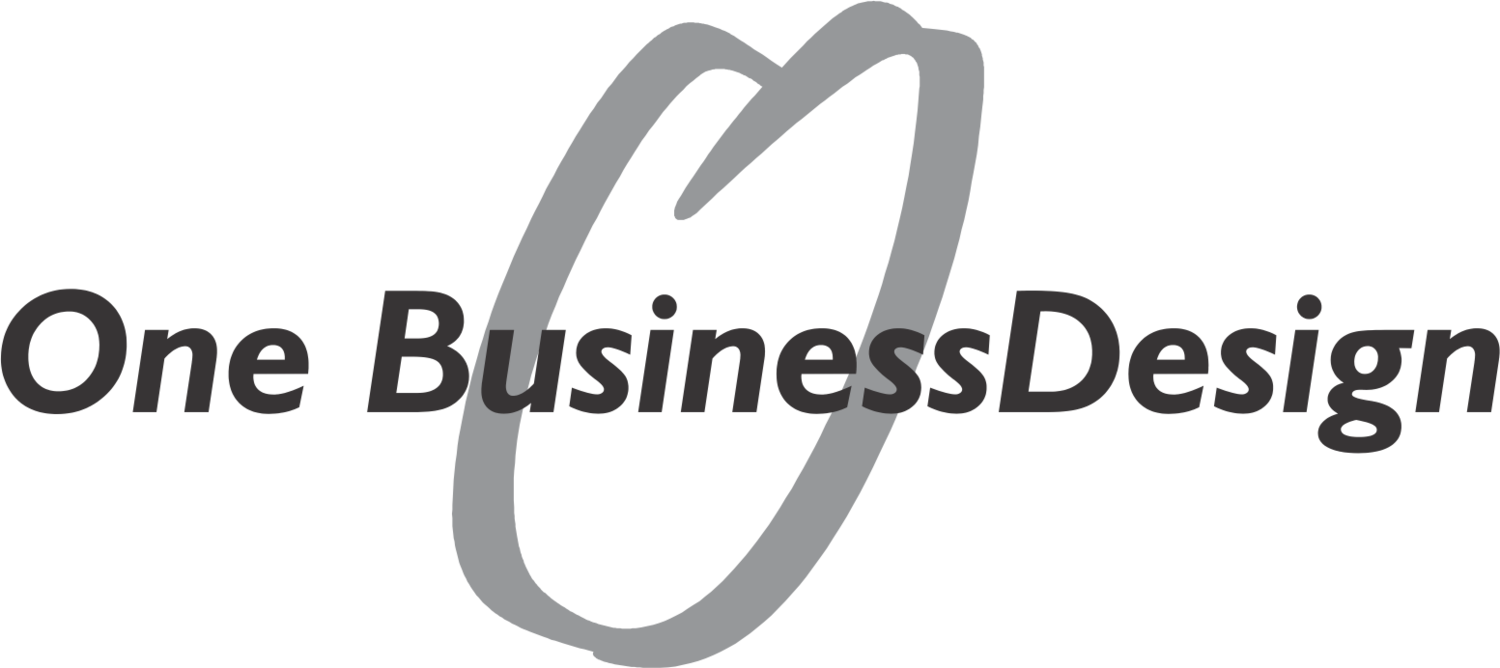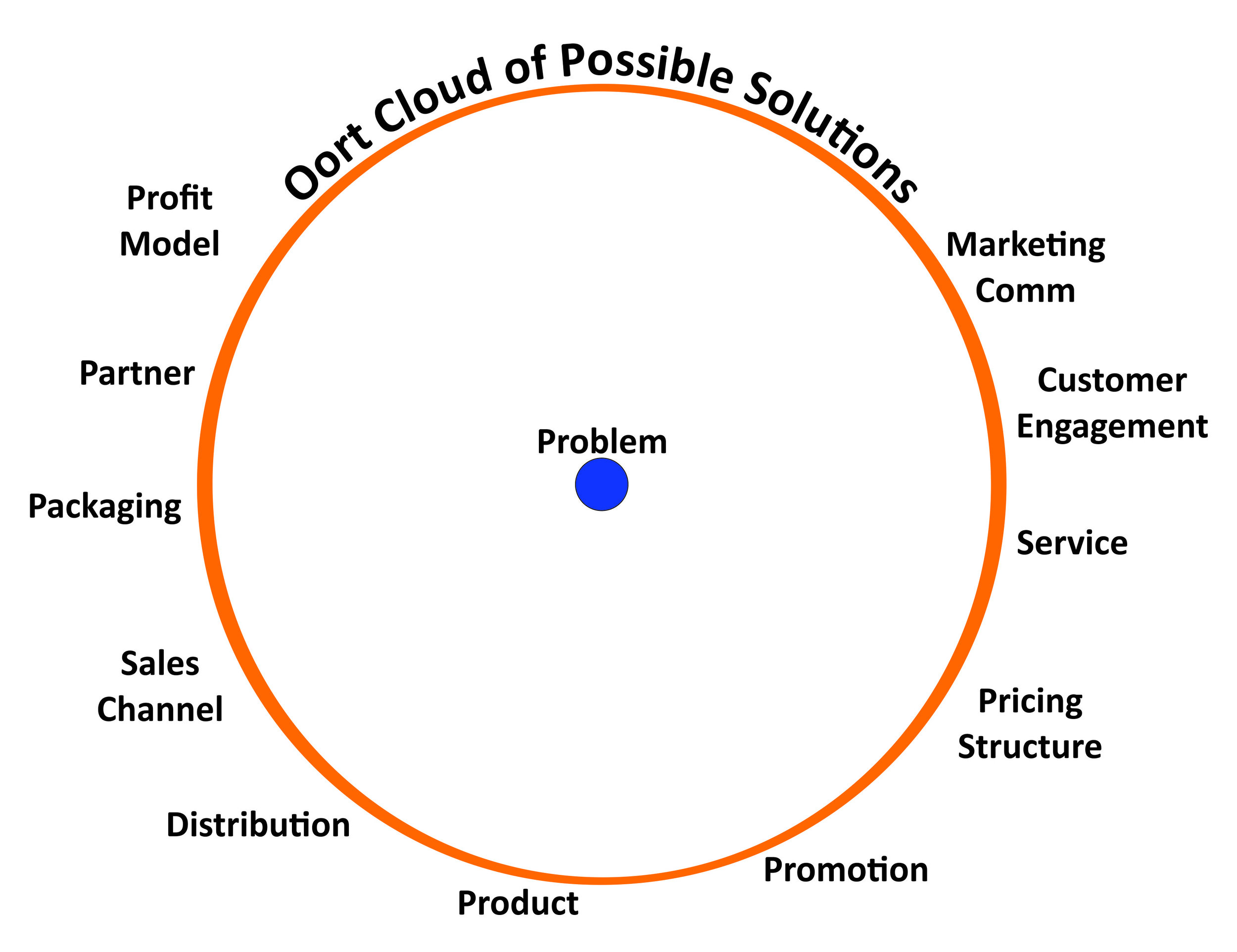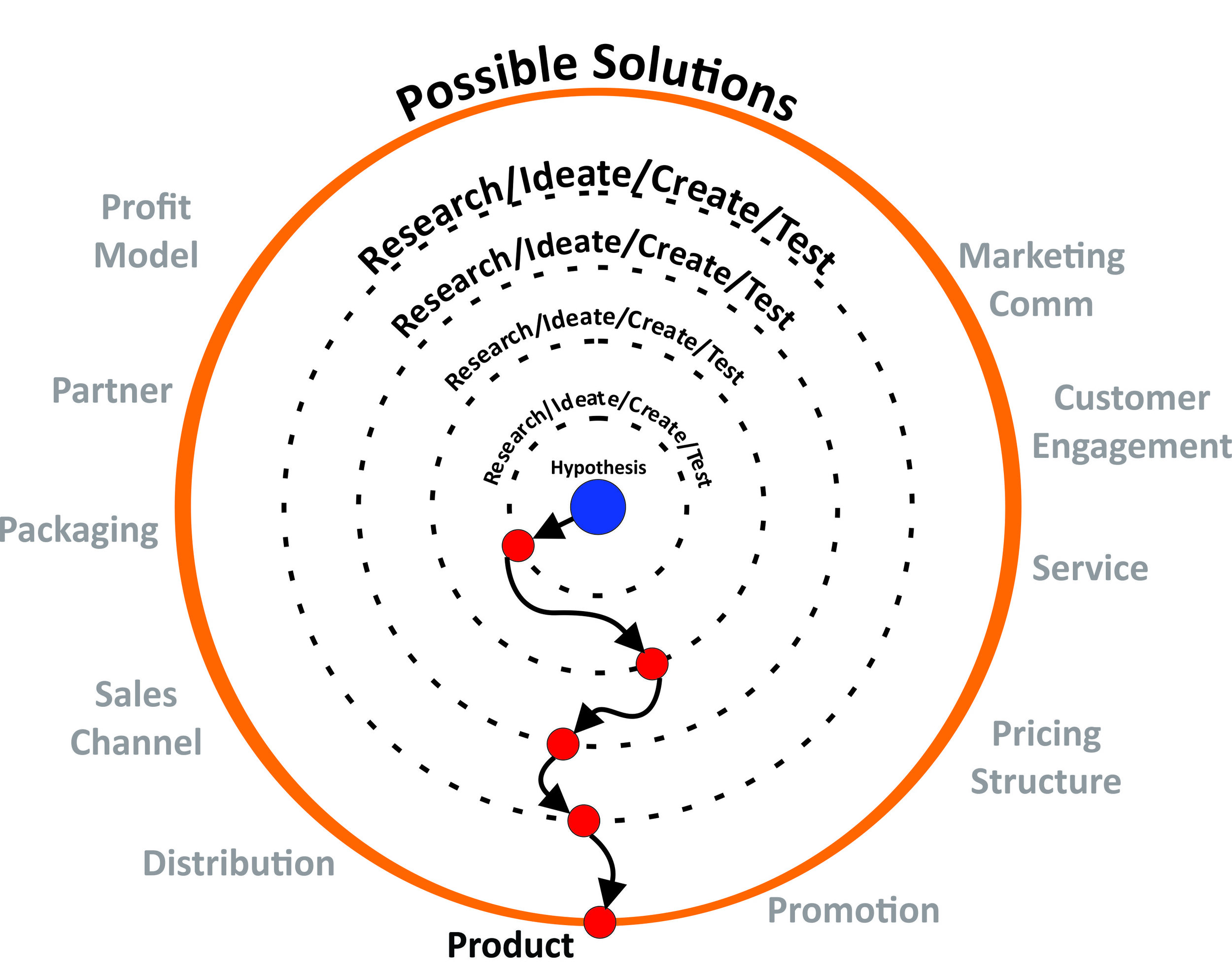Full disclosure: I have used this illustration in the past and I am not trying to put anyone down for this illustration. The articulation of Design Thinking is relatively new and it takes time and iteration to develop a clear and comprehensive visualization.
So what is the problem with this illustration? First, because it mimics to linear system, it implies that the spinning back in the test phase could go on forever. Other individuals on the team, who are focused on a project end date, feel very uncomfortable with this illustration. I have to agree.
The second problem is the small divide between Create and Refine. While this is done to attempt to create some clarity that the Research/Create/Test needs to occur several times before moving on. This gap again creates the belief, by those who are more involved in the latter phases of the project, that they must wait for the spinning to stop, the magic moment, before they can plan to become involved.
One Solution – The Oort Cloud Visual:
Background - The Oort Cloud, named after Dutch astronomer Jan Oort and Estonian astronomer Ernst Öpika, is theoretical region of the solar system, far beyond the orbit of the dwarf planet Pluto, in which billions of comets move in nearly circular orbits.
With Wicked Problems, we know there is a problem to be solved. However, the problem is difficult or impossible to solve because of incomplete, contradictory, and changing requirements that are often difficult to recognize. As such, the Oort cloud is a great analogy with which to start.
We know the answer is out there, but we don’t know exactly where to go.
Below is an initial illustration showing the Oort cloud of possible solutions. The solutions are neither exhaustive nor the same for every problem. My choice of potential solutions is purposeful in that all parts of a business model need to be open to change and not merely products and services.








